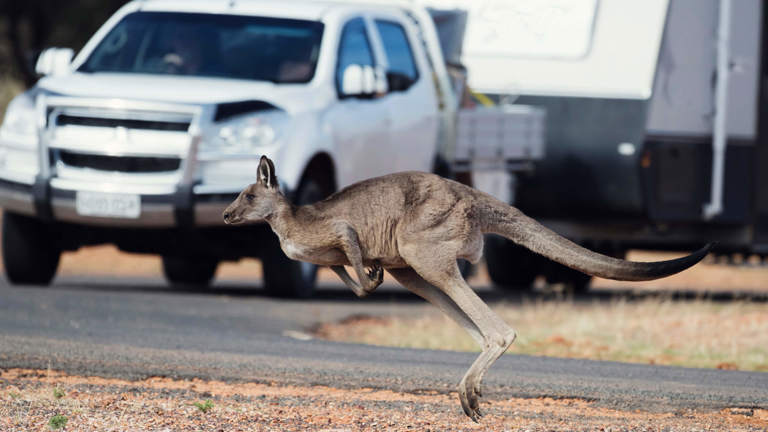If you’re wondering how to save money on your car, you’re probably not alone. There were approximately 21.2 million registered motor vehicles in Australia in January 2023,1 which equates to a whole lot of car expenses – something made tougher by the rising cost of living.2
In fact, as of 2023, the average Australian spends upwards of $21,000 per year on transport costs3 – much of which comes from car expenses such as fuel, loans, car insurance and registration.
But for many people, car ownership is not optional. Whether it’s dropping the kids to school, commuting to work, or living in an area that lacks viable public transport, many of us rely on our cars for everyday life.
While we don’t have a magic bullet when it comes to car expenses, we do have six tips – from purchasing a new car to managing running costs – that might hopefully result in cost savings.
1. Consider ongoing running costs such as car maintenance and regular servicing
When you buy a car, with any luck, you’ll own it for several years. So as well as noting the upfront price tag, it may help to consider ongoing expenses such as registration, car maintenance and regular servicing.
The federal government’s Moneysmart cars app is a tool that aims to help users work out the real cost of buying and running a car, including identifying hidden costs.
2. Check fuel prices before you fill up
Fuel prices tend to go up and down in Australia due to a mix of factors, including market forces.4 Although these prices aren’t controlled by the government, various state governments offer resources that can help you navigate these fluctuations.
Sites such as Fuel Check in New South Wales, MyFuel NT, Fuel Check in Tasmania and FuelWatch in Western Australia allow you to enter the postcode of the location you’re driving through and compare prices from petrol stations nearby. Most of these sites also display the average price of fuel at that time, which could give you an idea of how your area compares.
If you’re considering whether an electric car could help you save money, Transport for NSW also has a Total cost of ownership calculator that can help you compare the costs of owning different vehicle types.
With transport costs having a significant impact on many household budgets, it’s worth considering how to save money on your car.
3. Help your fuel go further
As well as looking for the cheapest fuel in your area, you might want to think about embracing ‘eco-driving’. A 2022 trial conducted by Transurban in Queensland identified a 5.5% reduction in fuel use among participants who used eco-driving, which is essentially a range of fuel-saving techniques and driver behaviours.5 Such techniques include:
- Smooth driving: Behaviours such as keeping a three-second gap from the car in front of you, avoiding accelerating or braking too hard, and shifting up gears early if you’re driving a manual car.
- Optimal tyre pressure: Inflating tyres to the correct pressure as per manufacturers’ recommendations.
- Deadweight removal: Not carrying around unnecessary weight.5
“The results showed there are great benefits that come from eco-driving – people can save money by improving their fuel efficiency and reduce their vehicle’s greenhouse gas emissions at the same time,” says Transurban’s Head of Sustainability, Amy Hogan.
"Eco-driving is also a critical component of road safety. By changing our behaviour to drive more smoothly, we can all help to minimise accidents.”
The NSW Government also has a resource dedicated to helping drivers combat rising transport costs.6 They advise the following driving behaviours to help your fuel go further:
- Get your car serviced regularly: This can help prolong the life of the motor and improve fuel economy.
- Avoid using air-conditioning in some instances: They advise air-conditioning can increase fuel use by up to 10%. However, if you’re going faster than 80km/h, it’s more economical to use air-conditioning as open windows can create extra drag and increased resistance.6
4. Choose car insurance that works for you
There’s no simple answer to the question, how much does car insurance cost? But, while sticking with compulsory third party cover only or shopping around for the cheapest policy possible might seem like good money-saving ideas, it’s important to choose the cover that will work best for you in the long term.
“You can often save by looking at some of the policy choices that you make, such as what excess you’re prepared to pay, whether you need a hire car if your car is out of action, and whether you want to reduce the excess for windscreen claims,” says Youi Head of Product – Vehicle, Marni Jackson.
“There’s also a cost difference between choosing an Agreed Value, which is set for the year, or Market Value.”
Outside of the different types of car insurance and the levels of cover they offer, there are a range of factors that can contribute to how premiums are calculated7 – some of which are in your control, and some of which aren’t.
For instance, your age, your driving history and your claims history could be taken into consideration, alongside how much you drive your car, where it is usually parked and even the make and model of the vehicle.
5. Shop around for a car loan
If you need finance to buy a new or used car, it may be a good idea to shop around for your car loan – according to Moneysmart, you could save thousands in interest and fees.8
Starting with the basics, a car loan is typically offered with either a fixed or variable interest rate. However, there may be hidden costs within these, such as early exit fees for fixed rate loans.8
Moneysmart also suggest caution with loans that offer a ‘balloon payment’, also known as a ‘residual payment’. This means you pay off part of the loan via regular repayments, with a lump sum paid at the end of the loan term. While your monthly repayments might be smaller, the lump sum is also paid with interest, which means the total cost of the loan can be higher.8
By arming yourself with an understanding of car loans – including how much you can spend, interest rates and repayments – you can give yourself a better chance at a better negotiation.
6. Practice safe driving
It should be obvious, but there are many benefits to obeying the road rules – including financial ones.
Evidence suggests a relationship between driving speed and fuel economy – speeding increases fuel consumption and decreases fuel economy as a result of tyre rolling and air resistance.9 Then there’s speeding and the costly fines it can incur.
“If you’ve incurred points on your licence, this is also likely to increase your insurance premium,” says Jackson.
Each state has its own road rules – and sets its own penalties – so it pays to be aware of the rules where you live.
If any of these tips have inspired you to take a second look at transport costs, consider starting an online quote with Youi to discover insurance that’s a bit more you-shaped.
Article by guest writer Annette Sampson
1 Source: Australian Government – Road Vehicles, Australia, June 2023
2 Source: Australian Bureau of Statistics – Employee households see biggest rise in living costs, August 2023
3 Source: Australian Automobile Association – Transport Affordability Data Dashboard, 20 September 2023
4 Source: Australian Competition & Consumer Commission – Petrol and fuel
5 Source: Transurban – Eco-Driving Trial Industry Report, February 2022
6 Source: NSW Government – Transport, driving and fuel: Cost of living
7 Source: Canstar – How much does car insurance cost?, 2023
8 Source: Moneysmart – Car loans
9 Source: US Department of Energy – Techniques for Drivers to Conserve Fuel



